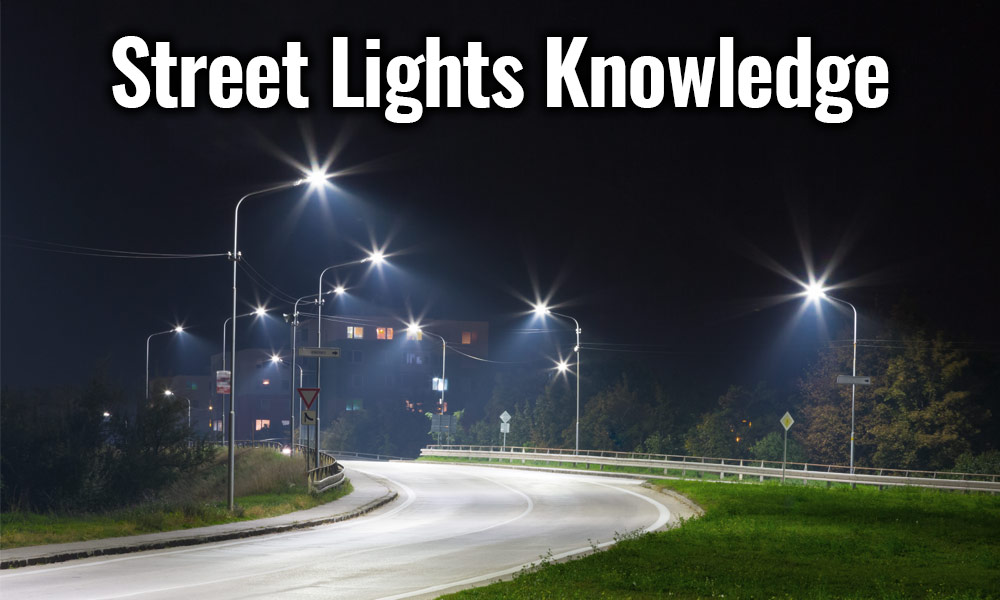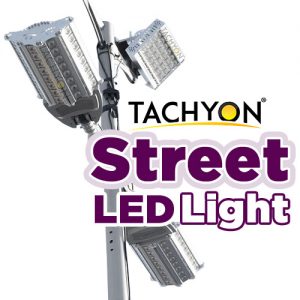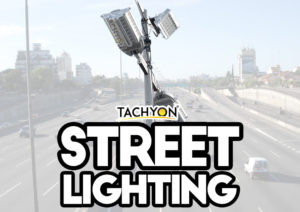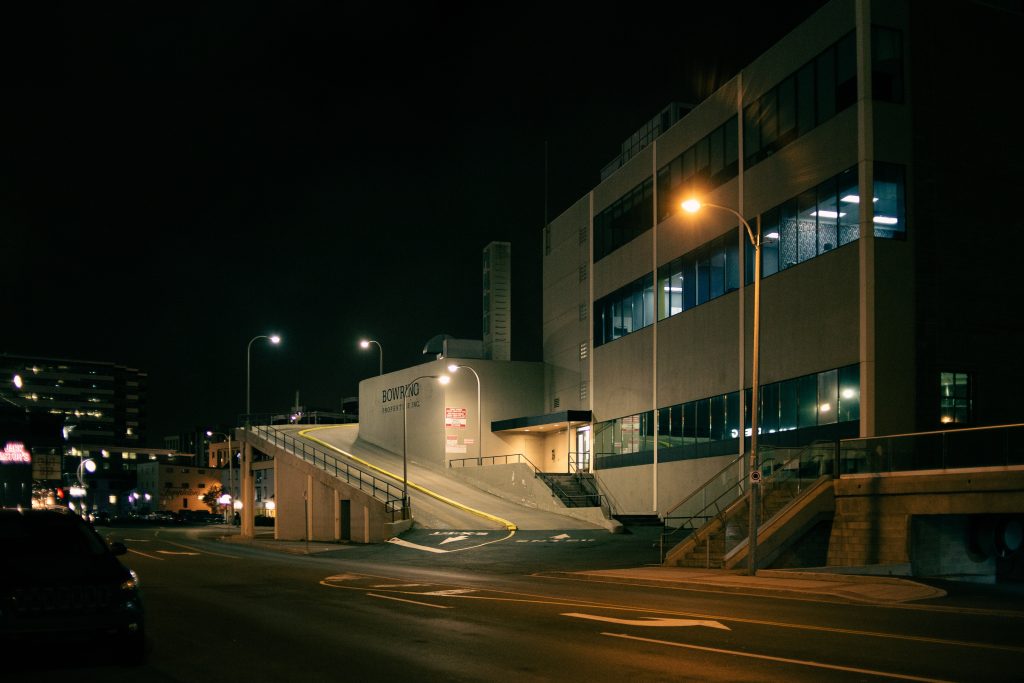Analysis of Lighting Status
At present, the traditional light source for road lighting is mainly high pressure sodium lamps. LED street lights have been piloted mainly on some branch roads. But the two have shown obvious advantages and disadvantages.
In terms of luminous efficiency, high-pressure sodium lamps can reach up to 140 lm/W, which is higher than the 120 lm/W of current commercial high-power LEDs. But the color rendering index of LED (about 80) is much higher than that of high-pressure sodium lamps (about 25). And under the same illumination, white LEDs are more helpful for drivers or pedestrians to identify targets, and their road lighting effects and comfort are much higher than high-pressure sodium lamps.
In terms of lamp efficiency, the high-pressure sodium lamp adopts a spherical luminous design. Considering the reflector efficiency comprehensively, the lamp efficiency of high-pressure sodium lamps is generally only 70%. But LED is directional light, if the designer adopts the appropriate light distribution design, most of the light will be directly projected on the road, and the efficiency of the lamp can reach more than 90%.
Therefore, only from the perspective of light efficiency and lamp efficiency, it can be seen that LED street lights have great potential to replace traditional street light sources. To this end, this paper will focus on the technical route and technical support of LED street lamps from the research results obtained on the three key technologies of light distribution, power supply and heat dissipation during the research and development process of LED lighting applications.
Light Distribution
Obtaining bat-wing light intensity distribution by optical design
At present, the LED street lamps on the market have two main types of light sources: a single 1W high-power white LED array and a high-power integrated packaged light source module.
Although the international standard for LED street lamps has not yet been issued, the light distribution of LED street lamps should achieve the following goals when referring to the requirements of traditional light source road lighting standards:
Appropriate average road brightness,
High total illuminance uniformity and longitudinal illuminance uniformity,
suitable environment,
Glare control.
Light intensity distribution design
From the light distribution curve, to achieve the above goals is to obtain a bat-wing light intensity distribution through appropriate optical design, so as to obtain a rectangular light spot distribution on the road surface. However, the package lens of ordinary high-power white LEDs (ie, the primary optical lens) is not suitable for direct application to LED street lamps. Therefore, a secondary optical lens should be added to the primary optical lens of each high-power white LED. At present, the “peanut” type secondary optical lens can achieve better results.
A new design idea is to directly design a wave-shaped optical lens mask outside the luminous light source of the once-packaged LED, and use the lens mask to achieve the function of the secondary optical lens of the entire LED street light luminous light source.
With the advancement of packaging technology, the packaging method of white LEDs has gradually shifted from a single 1W high-power LED device to a high-power integrated packaged light source module. The power of the current high-power integrated packaged light source modules can reach up to more than 100W, but the light-emitting area of this type of light source is too large, which brings difficulties to the optical light distribution design.
LED intelligent control technology
The high-power white LED intelligent control system technology with red light enhancement can obtain a light source with a color rendering index of more than 90 and an adjustable correlated color temperature of 2500~8000K.
The technology utilizes the integration of photoelectric conversion chips on the packaging substrate to monitor the white light colorimetric parameters of the light source module in real time. The photoelectric conversion chip feeds back the detected changes in the colorimetric parameters of the white light to the intelligent control system, and the system ensures that the lamp can output white light with optimal colorimetric performance after calculation. It can ensure that the output of the light source module maintains the set correlated color temperature range and color rendering index.
A temperature sensor chip is also integrated on the package substrate to detect the temperature of the package substrate in real time, so as to indirectly monitor the junction temperature of the high-power LED chip. When the junction temperature exceeds the preset temperature of the system, the system can automatically adjust the heat dissipation path of the cooling system or reduce the power of the LED. The light source module can be composed of a single 1W high-power white light LED array or a high-power integrated packaged light source module. It has been used in LED street lights.
Power Supply
Drive power reliability
Only with high reliability of the driving power supply can the life of the LED be better matched.
At present, the mainstream LED street lights are powered by alternating current. AC LED street lights have a common problem, that is, it is difficult to ensure that the life of the driving power supply matches the life of the LED. Because the alternating current must be rectified and filtered by the switching power supply to become direct current, and the switching power supply must be filtered by electrolytic capacitors.
General electrolytic capacitor life is only 8,000 hours, far less than the theoretical life of LED 50,000 hours. Moreover, every time the ambient temperature increases by 10°C, the life of the electrolytic capacitor is reduced by half, so that the life of the entire LED street light system will inevitably be dragged down by the electrolytic capacitor. Therefore, an important factor restricting the life of LED street lamps is the reliability design of the driving power supply.
If the power supply ensures the reliable operation of LED street lamps in an outdoor environment, it is generally necessary to consider high efficiency, high power, long life, overvoltage and overcurrent, isolation, surge, overtemperature, protection, compliance with safety regulations and electromagnetic compatibility requirements.
For high-power LED street lights, whether the light source part adopts a single 1 W high-power white light LED array or a high-power integrated packaged light source module, the mainstream power drive method is to adopt constant current drive. The general circuit structure is divided into two types. One is that a constant voltage source provides several constant current sources, and each constant current source independently drives a series of LEDs. The other is to directly convert the commercial power into constant current, and the LEDs operate in a series-parallel combination.
High-power array LED driving method
For this method of using a single 1 W high-power white LED array, the constant voltage source is relatively mature for the traditional switching power supply structure. The matching constant current source part is a DC step-down type, and the efficiency can reach more than 95%. In addition, the circuit space occupied is small, and it can be combined with the constant voltage source part or integrated with the LED, which has greater flexibility. The current of each LED can be independently controlled to ensure that the overall lighting of the lamp is consistent, but the cost will be slightly higher.
COB drive method
For the high-power integrated packaged light source module method, it is divided into two categories: isolation type and non-isolation type. The former has advantages in terms of cost and efficiency, but because it is non-isolated, the power supply is unstable, especially if the voltage is high at night or the surge generated during thunderstorms, it is easy to cause damage to the LED light source together with the power supply. Although the latter has lower efficiency and higher circuit complexity, its reliability is guaranteed.
Whether it is an isolated or non-isolated AC-DC constant current source, since the number of LEDs on the street lamp ranges from dozens to hundreds, the back-end LEDs should be considered in series and parallel. Therefore, the currents of the parallel circuits are inevitably inconsistent. At present, these two ways of power supply coexist. The multi-channel constant current output method is better in terms of performance and reliability, and will be the mainstream development direction of LED street lamp power driver in the future.
Take advantage of battery potential to extend the life of solar street lights
With the development of solar energy, a new energy source, solar LED street lights are gradually emerging everywhere. The low-voltage DC and long-life characteristics of solar cells just match LEDs. However, there is still a life bottleneck in the solar LED street light system, that is, the lead-acid battery.
The life of a general lead-acid battery is 500 charging cycles, about 2 years, or about 5,000 hours. The intelligent charging and discharging intelligent controller can make the life of lead-acid battery reach 1500 cycles.
In the traditional solar street lamp charging system, the solar panel and the battery are usually directly connected through the anti-current backflow diode. This will cause the operating point of the solar panel to shift from the maximum power point (MPP) without effectively utilizing the output power of the solar panel. At the same time, it is easy to cause the battery to be under-filled for a long time due to insufficient energy supply, resulting in a shortened lifespan.
The smart solar LED street light system utilizes Sun Tracking and Maximum Power Tracking (MPP Tracking, or MPPT) technologies to stabilize the output of the solar cell near the MPP, thus effectively utilizing the maximum power that the solar panel can output.
Intelligent dimming system
The intelligent dimming system can flexibly adjust the light output and reduce energy consumption.
Traditional high-pressure sodium street lamps can only achieve a small range of dimming control. For example, turning off one side or turning off street lights at intervals will inevitably bring about changes in lighting patterns, which are likely to cause safety hazards.
LED street lights can achieve 0-100% continuous dimming, and can flexibly adjust light output according to ambient light and traffic conditions, reducing unnecessary power consumption while ensuring lighting quality.
The intelligent dimming system of the LED street light can easily control the working state of the LED, and control its brightness by changing the driving current. For example, after entering the second half of the night, low-power operation can be achieved by reducing the current of the whole lamp or turning off some LED light-emitting components in the lamp to achieve the effect of energy saving.
Zigbee wireless communication control technology can also be applied to LED street lighting systems. The starting point of the Zigbee wireless control system is to develop a low-cost wireless network that is easy to deploy, with the characteristics of simple and compact protocol stack, power saving, reliability, short delay, and large network capacity. The Zigbee transceiver module is integrated on each LED street light, and collects all the information on the terminal by relay, so as to effectively monitor the operation of each LED street light at the terminal, and play a role in system control, troubleshooting and Anti-theft function.
Heat Dissipation
Optimized cooling and thermal management control system
Under the forward voltage of LED, the electrons overcome the electric field of the p-n junction under the driving of the electric field, transition from the n region to the p region and recombine with the holes in the p region. Since the free electrons transitioning to the p-region have higher energy than the valence electrons in the p-region, the electrons return to a low-energy state during recombination, and the excess energy is released in the form of photons. The radiated light also needs to pass through the semiconductor medium and package of the chip itself. medium to reach the outside world.
Considering factors such as current injection efficiency, radiant luminescence quantum efficiency, and external light extraction efficiency of the chip, only about 30% of the electrical energy of a 100 lm/W LED is converted into light energy, and the rest of the energy is converted into heat energy, which increases the temperature of the LED chip. . For an LED chip, if the heat cannot be effectively dissipated, the temperature of the chip will rise, resulting in uneven distribution of thermal stress, and a decrease in chip luminous efficiency and phosphor efficiency.
The effect of temperature rise on LED
As the temperature of the p-n junction rises, the emission wavelength of the LED chip will be red-shifted, resulting in a decrease in the excitation efficiency of the YAG phosphor. The total luminous intensity decreases and the chromaticity of white light shifts. When the temperature exceeds a certain value, the failure rate of the device will increase exponentially. For every 2°C increase in device temperature, reliability will decrease by 10%. In order to ensure the life of the device, the junction temperature of the p-n junction is generally required to be below 90 °C. When multiple LEDs are densely arrayed or packaged together, the system heat dissipation problem is more serious. Therefore, solving the problem of heat dissipation has become a prerequisite for LED street lamps.
How to improve cooling capacity
How to improve the heat dissipation capacity of LED street lamps is the core issue of LED packaging and LED street lamp design. The heat dissipation problem of LED street lamps is divided into three levels from the chip p-n junction to the epitaxial layer, the epitaxial layer to the packaging substrate, and the packaging substrate to the external environment.
These three links constitute the channel of heat conduction. In response to the heat dissipation problem of LEDs, the LED lighting industry has optimized the design of the heat dissipation and thermal management systems at the following levels.
Heat dissipation from chip p-n junction to epitaxial layer
During the growth of gallium nitride materials, the material structure is improved and the growth parameters are optimized. Obtain high-quality epitaxial wafers and improve the internal quantum efficiency of the device. Fundamentally reduce heat generation and accelerate the thermal conduction from the chip’s p-n junction to the epitaxial layer.
Heat dissipation from epitaxial layer to package substrate
On the chip package, the flip-chip structure, the eutectic bonding package and the metal circuit board structure are adopted. For device packaging, select appropriate substrate materials, such as metal printed circuit boards (MC-PCB), ceramics, composite metal substrates and other packaging substrates with good thermal conductivity to accelerate heat dissipation from the epitaxial layer to the packaging substrate.
The heat dissipation from the package substrate to the external environment
The current LED street lamps are generally welded by high-power white LEDs on a metal package substrate in an array by reflow soldering, and then the metal package substrate is tightly mounted on the large-volume aluminum and copper heat dissipation fins. The heat generated by the high-power white LED is transferred to the heat dissipation fins through the metal package substrate, and the purpose of heat dissipation is achieved by natural convection or artificial forced convection.








